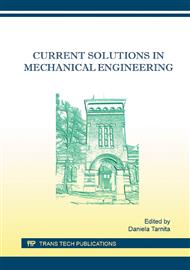p.479
p.485
p.489
p.495
p.501
p.507
p.513
p.519
p.525
Factors Affecting Electrochemical Honing of SS-316
Abstract:
Electrochemical Honing (ECH) is a process of precision finishing of functional surfaces with the use of the electrical and mechanical energy. It is reported that the 90 percent of the material is removed by electrochemical machining (ECM) process and remaining 10 percent by mechanical scrubbing, which shows the electrical energy is the main constituent in the ECH process. Basically, electrical energy is combined with chemical to form an electrolysis dissolution to remove material from the workpiece surface. This work presents a study for the factors affecting the electrochemical honing of SS-316 turned surfaces, especially the processing time and electrolyte composition. The percentage improvement in surface roughness (Ra, Rt) and out-of-roundness (OOR) as a monitored output of ECH were determined. The results are finally furnished with the aim to generalize a useful guideline for the user to enable proper selection of conditions for obtaining good surface quality.
Info:
Periodical:
Pages:
513-518
Citation:
Online since:
January 2016
Authors:
Price:
Сopyright:
© 2016 Trans Tech Publications Ltd. All Rights Reserved
Share:
Citation:


